Text
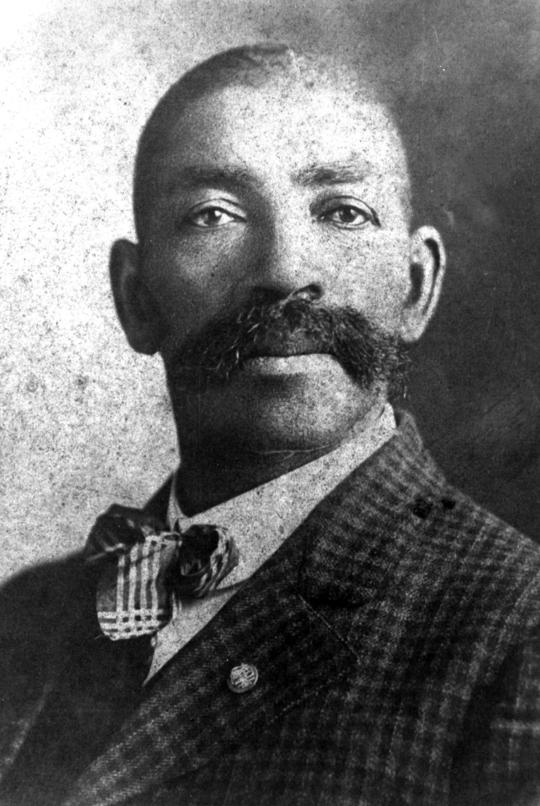
Bass Reeves (1838 –1910) was a runaway slave, gunfighter, farmer, scout, tracker, and deputy U.S. Marshal. He spoke several languages including Cherokee and Creek. Bass was one of the first African-American deputy U.S. Marshals west of the Mississippi River mostly working in the rough Indian Territory. The region was saturated with horse thieves, cattle rustlers, gunslingers, bandits, swindlers, and murderers. Bass made more than 3,000 arrests in his lifetime, only killing fourteen men in the line of duty.
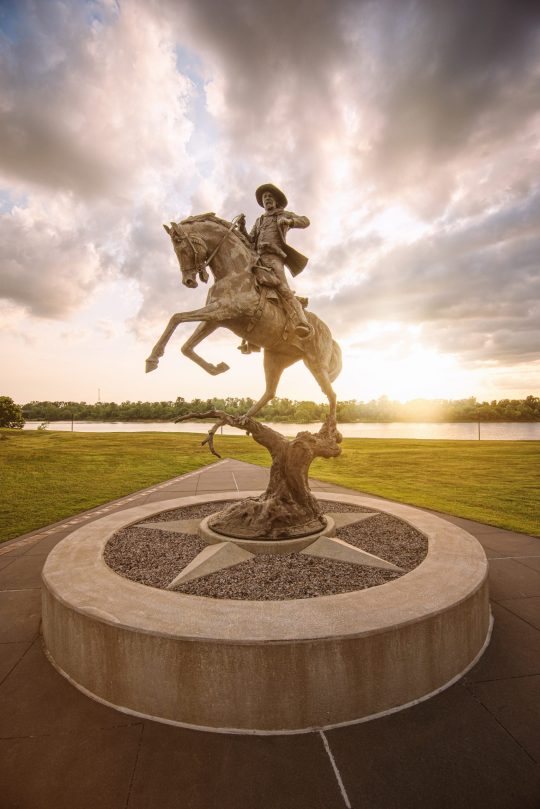
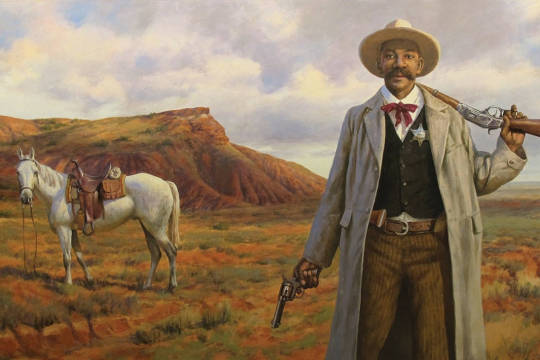
Bass was born into slavery in Crawford County, Arkansas. His family were slaves belonging to Arkansas state legislator William Steele Reeves. During the American Civil War, his owners fought for the Confederacy. At some point, Bass escaped and fled to Indian country where he learned American Indian languages, customs, and tracking skills. He eventually became a farmer. By 1875, Bass was hired as a deputy U.S. Marshal along with 200 other individuals. He was 37 years old. Bass was well acquainted with the Indian territory and served on their land for over 32 years as a peace officer covering over 75,000 square miles, presently known as Oklahoma.
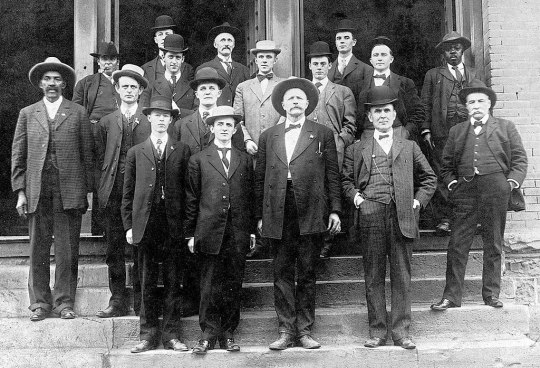
Reeves (left) with a group of Marshals in 1907
Bass encountered some of the most ruthless outlaws of his day. His weapons of choice were the Winchester Models 1873 and 1892. They were guns that conveniently fit dual-purpose handgun/rifle cartridges. He also briefly used the Colt 45 peacemaker. He tracked and killed notorious outlaw Jim Webb. Webb murdered over eleven people. Another notorious desperado Bass encountered was murderer and horse thief Wiley Bear. Bass rounded him up along with his gang which included John Simmons and Sam Lasly. Bass was also in a gunfight with the Creek desperado Frank Buck whom he shot and killed.
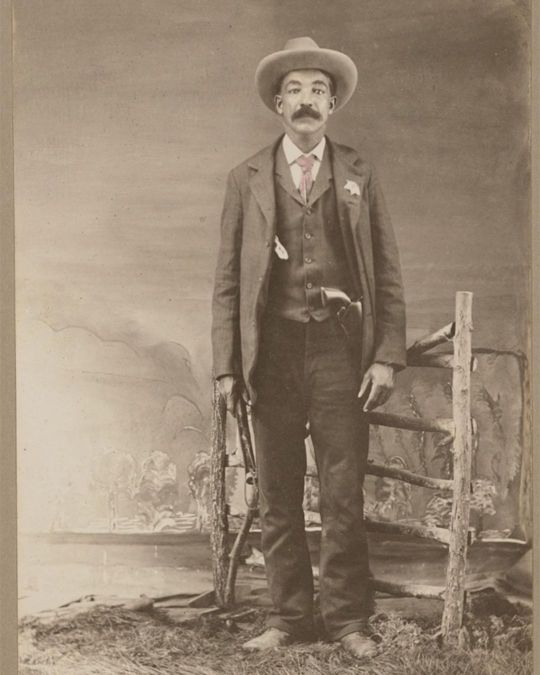
Bass was immortalized in the popular media including TV shows, films, novels, poems, and books. He was also inducted into the Texas Trail of Fame. A bronze statue of Reeves was erected in Pendergraft Park in Fort Smith, Arkansas and the Bass Reeves Memorial Bridge in Oklahoma, was named after the legendary lawman.
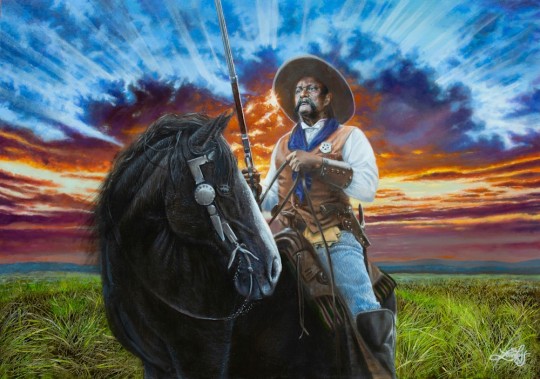
Bass Reeves is held by many to be the original Lone Ranger. He worked for 32 years as a federal peace officer in the Indian Territory, and became one of Judge Parker's most valued deputies. Reeves brought in some of the most dangerous criminals of the time, but was never wounded, despite having his hat and belt shot off on separate occasions.
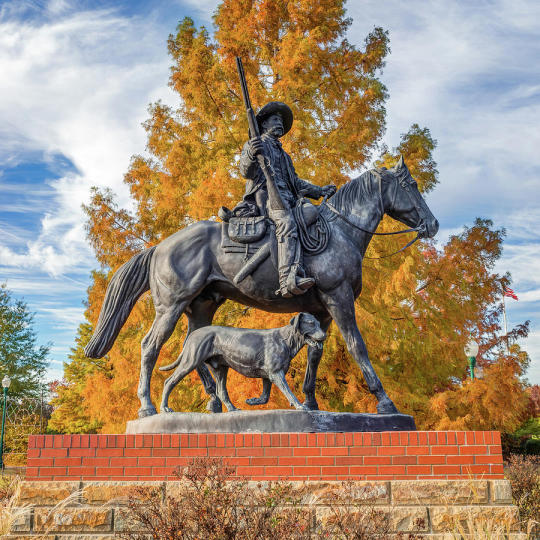
Statue dedicated to Bass Reeves in Fort Smith, Arkansas

Bass Reeves - "Double Fist" by Gabe Leonard
186 notes
·
View notes
Photo

Hannah Till, (Nation Park Service reenactor pictured above), was Washington’s cook for much of the revolutionary war. Not much is known about her, and what is known is shrouded in disagreement. According to Journal of the American Revolution;
At 35 years of age she was sold to Parson Mason, of New York, with whom she dwelt there until the war of the Revolution; she then bought her freedom, and with her husband was hired into General Washington’s military family as cooks—serving with him in all his campaigns for six and a half years, and for half a year she was lent into the service of General La Fayette.
This claim is countermanded by the Valley Forge National Historical Park website, which states that:
Reverend Mason leased Hannah to cook for George Washington and his wartime staff, and so she joined her husband Isaac Till, an enslaved cook leased by Captain John Johnson of Bergen County, New Jersey… Both cooks had an arrangement with the commander-in-chief and their respective enslavers whereby they would purchase their freedom, which they each completed on October 30, 1778.
Regardless, Till was one of few enslaved people who was paid a wage, on top of being allowed to sell her homemade goods. As a result, she was able to purchase her freedom either before or during the Revolutionary War.
Hannah Till’s position gave her unique insight into Washington’s character. She remarked that (as recounted by the interviewer);
he was very positive in requiring compliance with his orders; but was a moderate and indulgent master. He was sometimes familiar among his equals and guests, and would indulge a moderate laugh. He always had his lady with him in the winter campaigns, and on such occasions, was pleased when freed from mixed company and to be alone in his family. He was moderate in eating and drinking. [Washington’s] ideas about religion were not very strict…he did not strictly guard against [cursing] in times of high excitements…on one provocation with her, he called her c—d [colored] fool. General La Fayette she praised greatly—said he was very handsome, tall, slender, and genteel, having a fair white and red face, with reddish hair—that he spoke English plain enough—was always very kind:—`Truly he was a gentleman to meet and to follow!’
After the war, her and her husband continued to work as cooks, but soon found themselves struggling with debts. When Lafayette heard of this he advanced them enough money to clear all of it.
She lived to 104, and is buried in Eden Cemetery in Collingdale, Pennsylvania, a segregated, black-owned Cemetery, which has faced a good deal of protest and vandalism since its founding.

120 notes
·
View notes
Text
3 notes
·
View notes
Text
youtube
3 notes
·
View notes
Photo
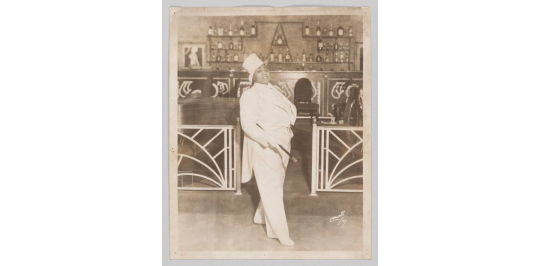
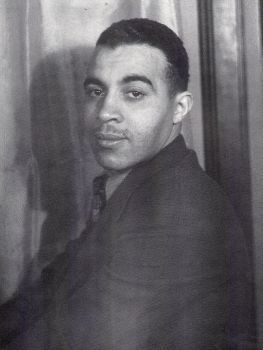
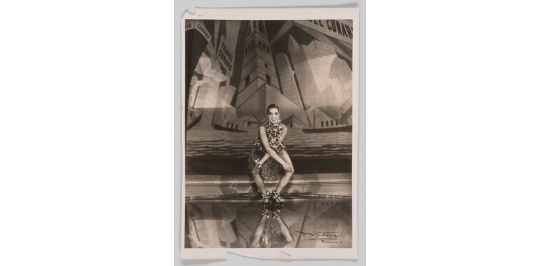
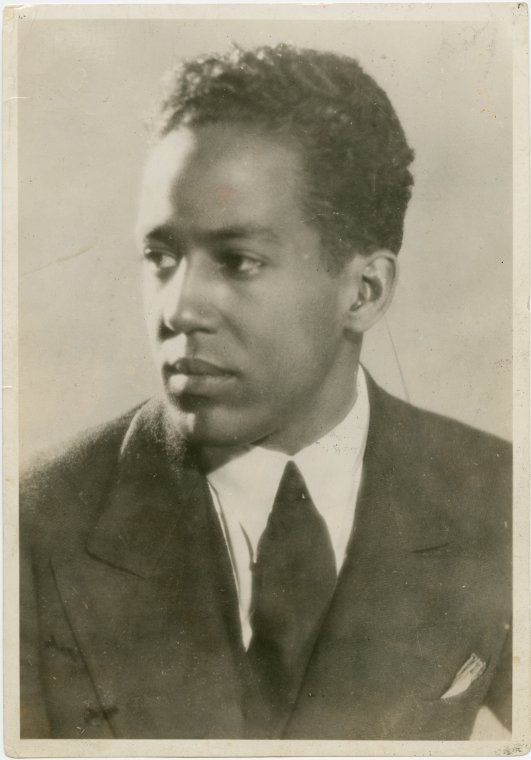
Queer Figures of the Harlem Renaissance
Gladys Bentley
Gladys Bentley was a blues singer who thrived during the Harlem Renaissance during the 20s and early 30s, becoming known as Harlem’s favourite ‘bulldagger’ and was known to have many female lovers during her life. Often singing controversial songs and known as a male impersonator for dressing in white tuxedos and top hats, she frequently performed and headlined at the famous gay speakeasy, The Clam House. Around 1930, Bentley married a white woman in Atlantic City, New Jersey. But later, Bentley went back in the closet and her all-too-brief period of fame ended in the 1930s. Ultimately, homophobia, uniting with racism, sexism, and classism, destroyed Bentley’s ability to live creatively and freely and she drew back into the closet and claimed to marry a man who denied ever being married to Bentley (Wilson 2010).
Richard Bruce Nugent
Richard Bruce Nugent was one of the few publicly out queer artists of the Harlem Renaissance and was as the ‘perfumed orchid of the New Negro Movement’ (Glick 2009:86). Nugent was known to have lived with another queer writer Wallace Thurman from the years 1926 to 1928 in Harlem, which led to the publishing of the story ‘Smoke, Lilies, and Jade’ in Thurman’s black literary publication Fire!!. The story covered themes of bisexuality and more explicitly interracial male desire. Despite his openness about male attraction, Nugent married Grace Marr in 1952 until her suicide in 1969 (Wirth 2002).
Josephine Baker
Josephine Baker was a well-known singer, dancer and actress within the early years of the Harlem Renaissance. However, she struggled to find an audience within the US and predominantly grew her large career overseas in Paris. Because of this, she is often known as the first Black international star. Her song, ‘J’ai Deux Amours,’ meaning ‘I have two loves,’ became one of her biggest, in which Baker took to mean France and the United States (Goodman 2019). Baker identified herself as bisexual. She married four different times throughout her life but carried on affairs with women, including Mexican artist Frida Kahlo and French author Colette.
Langston Hughes
One of the most well-known and written about, poet, novelist and playwright, Langston Hughes, was a primary voice of the Harlem Renaissance. Although Hughes never spoke of his sexuality often in public, there are a lot of homosexual themes in his work such as ‘Blessed Assurance’ and ‘Seven People Dancing.’ Garber wrote that ‘Hughes was exceedingly cagy and evasive about his emotional involvements, even with his closest friends; as a result, though most of Hughes’ biographers concede that the poet was at least sporadically homosexual, the exact nature of his sexuality remains uncertain’ (1990:326). He also often attended and was fond of the Harlem drag balls, naming them the infamous ‘spectacles of colour’.
As professor Henry Louis Gates describes, the Harlem Renaissance was, ‘surely as gay as it was black’ (1993:233). With the growth in art, jazz and blues, and drag balls, this time period was defined as ‘homosexual mecca’ or queer paradise and can be seen to have had many other LGBTQ artists that led the Harlem Renaissance. Some of the famous names including Countee Cullen, Ethel Waters, Ma Rainey, Claude Mckay, Alain Locke, Bessie Smith, James Richmond Barthé, Alberta Hunter, Alice Dunbar-Nelson, and Angelina Weld Grimké.
Gates, Henry Louis (1993) The Black Man’s Burden. In Fear of a Queer Planet: Queer Politics and Social Theory ed. Michael Warner, Minneapolis: University of Minnesota Press, pp. 230-238.
Glick, Elisa (2009) Materializing Queer Desire: Oscar Wilde to Andy Warhol. Albany: State University Press.
Jules-Rosette, Bennetta (2007) Josephine Baker in Art and Life. Chicago: University of Illinois Press.
Schwarz, A. B. Christa (2003) Gay Voices of the Harlem Renaissance. Bloomington: Indiana University Press.
Wilson, James F. (2010) Bulldaggers, Pansies, and Chocolate Babies: Performance, Race, and Sexuality in the Harlem Renaissance. Michigan: University of Michigan Press.
Wirth, Thomas H. (2002) Gay Rebel of the Harlem Renaissance. Durham: Duke University Press.
Photo 1: Unknown n.d. A silver gelatin print depicting a black-and-white image of entertainer Gladys Bentley. Bentley is depicted standing in three-quarters profile with her head turned towards the viewer, and her proper right foot forward. She is wearing a white tuxedo, top hat, and she is holding a cane under her proper right arm. Collection of the Smithsonian National Museum of African American History and Culture.
Photo 2: Unknown n.d. Photograph of Richard Bruce Nugent (also Bruce Nugent). Image courtesy Beinecke Library, Yale University.
Photo 3: Walery n.d. Photographic print of Josephine Baker performing at the Folies Bergère. Collection of the Smithsonian National Museum of African American History and Culture and National Portrait Gallery, gift from Jean-Claude Baker.
Photo 4: Unknown n.d. Langston Hughes as a young man. Schomburg Center for Research in Black Culture, Photographs and Prints Division, The New York Public Library.
#black history#queer history#harlem renaissance#gladys bentley#richard bruce nugent#josephine baker#langston hughes
241 notes
·
View notes
Text
4 notes
·
View notes
Text
youtube
0 notes
Text
seward: i don’t think you should give the crime against kansas speech
sumner: seen ✔️ 2:45 am
111 notes
·
View notes
Photo

Planning to join the first session of #SLAVERYARCHIVE BOOK CLUB on JULY 1st at 5:00 PM? Get a copy of Vincent Brown’s Tacky’s Revolt and follow the instructions below. To join with Zoom (first 100 participants) register here: https://bit.ly/2z9vkYR To watch live on Youtube go here: https://bit.ly/2WXNe9O To watch live on Facebook go here: https://ift.tt/2YCoNOO https://ift.tt/30GDN0X https://instagr.am/p/CBbQW9EAsYv/ Follow #ADPhD on IG: @afrxdiasporaphd
1 note
·
View note
Text
Institutionalized racism
It’s taken us too long to post this on Tumblr, we’re sorry. We’ve compiled a syllabus that is free to all that addresses institutionalized racism and how it’s caused historic, pointed harm at the Black community in the U.S. Understanding history is key to understanding the present, and in order to make real changes, we need to fully understand the racist history of the U.S. Black Lives Matter.
Find it here: https://daily.jstor.org/institutionalized-racism-a-syllabus/
17K notes
·
View notes
Text
Canadian-specific actionables in support of Black Lives Matter
Hey friends, please share: a Canadian-specific 24-page masterpost to actionables and resources, including mental health supports for Black folks, education and literature resources for allies, IG guides, protest safety, and more:
tiny.cc/BLMactionables
5K notes
·
View notes
Link
What do I say about the events of the last week? Or of the last 400 years? How many reminders do we need that Black Lives Matter? It’s not enough to say their names. It’s important but it’s not enough. We demand justice. We demand the reform or abolition of every discriminatory system of law enforcement and mass incarceration. In the meantime, please consider donating to one of my favourite nonprofits, Black Legal Action Centre (linked above).
3 notes
·
View notes
Link
0 notes
Link
0 notes
Photo










The Hungarian Revolution of 1956.
214 notes
·
View notes
Photo

What ‘Harriet’ gets right about Tubman by Kellie Carter Jackson - The Washington Post https://ift.tt/34m5hrm #ADPhD #slaveryarchive —- “The film excavates the specific challenges that black women faced in antebellum America by showing how Tubman navigated sexism and racism while resisting slavery. The film provides a nuanced exploration of her complicated relationship with men — her husband, father, black sailors, slave catchers and fellow abolitionists — to show how Tubman uniquely defied the patriarchal norms of the times. Most women during the abolitionist movement were pushed to the periphery of activism and even admonished for speaking in public. But Tubman was unquestionably a leader. She had little use for lengthy monologues or arousing speeches. Her success in rescuing enslaved people gave her the ability to invert social norms. "And in this, it was not just her resolve, but her willingness to use her revolver that provided results. This is the film’s most important contribution to historical understanding. It realistically depicts not just the realities of slavery, but also what it took to achieve freedom: force.” https://ift.tt/2JHwuN4 Follow #ADPhD on IG: @afrxdiasporaphd
4 notes
·
View notes
Text
tumblr
Colorism
29K notes
·
View notes